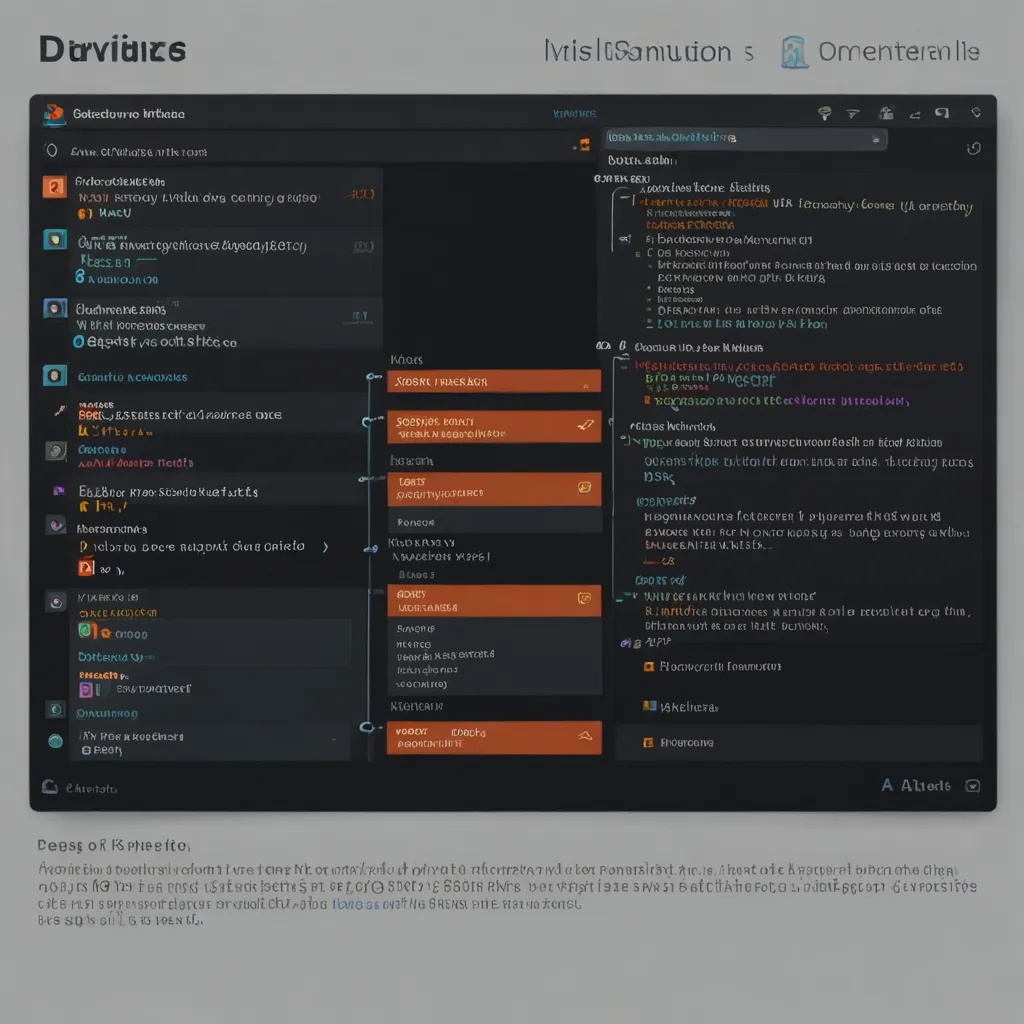Memory management is a crucial aspect of C++ programming that can significantly impact the performance and reliability of our applications. By mastering effective techniques, we can optimize resource usage, prevent memory leaks, and create more efficient code. Let’s explore eight powerful strategies for managing memory in C++.
Smart Pointers: A Game-Changer in Memory Management
Smart pointers are one of the most powerful tools in modern C++ for managing dynamic memory. They provide automatic memory deallocation, eliminating the need for manual delete calls and reducing the risk of memory leaks. The C++ Standard Library offers three main types of smart pointers: unique_ptr, shared_ptr, and weak_ptr.
unique_ptr is ideal for exclusive ownership scenarios. It automatically deletes the object it points to when it goes out of scope. Here’s an example:
#include <memory>
class MyClass {
public:
MyClass() { std::cout << "Constructor called\n"; }
~MyClass() { std::cout << "Destructor called\n"; }
};
int main() {
std::unique_ptr<MyClass> ptr = std::make_unique<MyClass>();
// ptr is automatically deleted when it goes out of scope
}
shared_ptr allows multiple pointers to share ownership of the same object. The object is deleted when the last shared_ptr pointing to it is destroyed. This is particularly useful for complex data structures with shared resources:
std::shared_ptr<int> p1 = std::make_shared<int>(42);
std::shared_ptr<int> p2 = p1; // Both p1 and p2 now own the same int
weak_ptr is used in conjunction with shared_ptr to avoid circular references. It provides a non-owning reference to an object managed by shared_ptr.
RAII: Resource Acquisition Is Initialization
RAII is a fundamental C++ technique that ties resource management to object lifetime. By acquiring resources in a constructor and releasing them in the destructor, we ensure proper cleanup even in the face of exceptions. This principle applies not only to memory but to any resource that needs management, such as file handles or network connections.
Here’s a simple RAII wrapper for a dynamically allocated array:
template <typename T>
class ArrayWrapper {
private:
T* data;
size_t size;
public:
ArrayWrapper(size_t n) : data(new T[n]), size(n) {}
~ArrayWrapper() { delete[] data; }
T& operator[](size_t index) { return data[index]; }
const T& operator[](size_t index) const { return data[index]; }
size_t getSize() const { return size; }
};
int main() {
ArrayWrapper<int> arr(10);
arr[0] = 42;
// arr is automatically deleted when it goes out of scope
}
Custom Allocators: Tailoring Memory Management
When the default memory allocation strategy doesn’t meet our specific needs, we can implement custom allocators. This allows us to control how memory is allocated and deallocated, which can be particularly useful for performance-critical applications or systems with limited resources.
Here’s a simple custom allocator that uses a pre-allocated buffer:
template <typename T, size_t Size>
class FixedAllocator {
private:
char buffer[Size * sizeof(T)];
bool used[Size] = {false};
public:
T* allocate(size_t n) {
for (size_t i = 0; i < Size - n + 1; ++i) {
if (std::all_of(used + i, used + i + n, [](bool b) { return !b; })) {
std::fill(used + i, used + i + n, true);
return reinterpret_cast<T*>(buffer + i * sizeof(T));
}
}
throw std::bad_alloc();
}
void deallocate(T* p, size_t n) {
size_t index = (reinterpret_cast<char*>(p) - buffer) / sizeof(T);
std::fill(used + index, used + index + n, false);
}
};
int main() {
std::vector<int, FixedAllocator<int, 100>> vec;
vec.push_back(42);
}
Move Semantics: Efficient Resource Transfer
Move semantics, introduced in C++11, allow us to transfer resources between objects without unnecessary copying. This is particularly useful for managing unique resources or implementing efficient container classes.
Here’s an example of a simple string class that implements move semantics:
class String {
private:
char* data;
size_t length;
public:
String(const char* str) : length(strlen(str)), data(new char[length + 1]) {
strcpy(data, str);
}
// Copy constructor
String(const String& other) : length(other.length), data(new char[length + 1]) {
strcpy(data, other.data);
}
// Move constructor
String(String&& other) noexcept : data(other.data), length(other.length) {
other.data = nullptr;
other.length = 0;
}
// Move assignment operator
String& operator=(String&& other) noexcept {
if (this != &other) {
delete[] data;
data = other.data;
length = other.length;
other.data = nullptr;
other.length = 0;
}
return *this;
}
~String() { delete[] data; }
};
Memory Pools: Efficient Allocation for Small Objects
Memory pools can significantly improve performance when we need to allocate many small objects of the same size. By pre-allocating a large chunk of memory and dividing it into fixed-size blocks, we can reduce the overhead of frequent allocations and deallocations.
Here’s a basic implementation of a memory pool:
template <typename T, size_t BlockSize = 4096>
class MemoryPool {
private:
struct Block {
char data[BlockSize];
Block* next;
};
Block* currentBlock;
size_t currentIndex;
public:
MemoryPool() : currentBlock(nullptr), currentIndex(BlockSize) {}
T* allocate() {
if (currentIndex == BlockSize) {
Block* newBlock = reinterpret_cast<Block*>(new char[sizeof(Block)]);
newBlock->next = currentBlock;
currentBlock = newBlock;
currentIndex = 0;
}
return reinterpret_cast<T*>(¤tBlock->data[currentIndex++ * sizeof(T)]);
}
void deallocate(T* p) {
// In this simple implementation, we don't actually free memory
// until the pool is destroyed. In a real-world scenario, you might
// want to implement a more sophisticated deallocation strategy.
}
~MemoryPool() {
while (currentBlock) {
Block* next = currentBlock->next;
delete[] reinterpret_cast<char*>(currentBlock);
currentBlock = next;
}
}
};
Placement New: Constructing Objects in Pre-allocated Memory
Placement new allows us to construct objects at a specific memory location. This can be useful when working with memory pools or implementing custom allocators. It separates the allocation of memory from the construction of objects, giving us fine-grained control over object lifetime and memory usage.
Here’s an example of using placement new with a memory pool:
class MyClass {
public:
MyClass(int x) : value(x) {}
int value;
};
MemoryPool<MyClass> pool;
void* memory = pool.allocate();
MyClass* obj = new (memory) MyClass(42);
// When we're done with the object:
obj->~MyClass();
pool.deallocate(obj);
Reference Counting: Efficient Shared Ownership
While shared_ptr provides a general-purpose solution for shared ownership, implementing our own reference counting can sometimes lead to better performance, especially in scenarios where we have full control over the object’s lifetime.
Here’s a simple implementation of reference counting:
template <typename T>
class RefCounted {
private:
T* data;
size_t* refCount;
public:
RefCounted(T* ptr) : data(ptr), refCount(new size_t(1)) {}
RefCounted(const RefCounted& other) : data(other.data), refCount(other.refCount) {
++(*refCount);
}
~RefCounted() {
if (--(*refCount) == 0) {
delete data;
delete refCount;
}
}
T* get() const { return data; }
T& operator*() const { return *data; }
T* operator->() const { return data; }
};
Small Object Optimization: Avoiding Heap Allocations
For small objects that are frequently created and destroyed, we can implement small object optimization to avoid heap allocations. This technique involves reserving a small buffer within the object itself to store data when it’s small enough, falling back to heap allocation only when necessary.
Here’s an example of a string class with small string optimization:
class String {
private:
static const size_t SmallBufferSize = 16;
union {
char* largeBuffer;
char smallBuffer[SmallBufferSize];
};
size_t length;
bool isSmall;
public:
String(const char* str) : length(strlen(str)), isSmall(length < SmallBufferSize) {
if (isSmall) {
strcpy(smallBuffer, str);
} else {
largeBuffer = new char[length + 1];
strcpy(largeBuffer, str);
}
}
~String() {
if (!isSmall) {
delete[] largeBuffer;
}
}
// Copy constructor, move constructor, and assignment operators omitted for brevity
};
In my experience, effective memory management in C++ requires a combination of these techniques, applied judiciously based on the specific requirements of each project. Smart pointers and RAII form the foundation of modern C++ memory management, providing safety and exception-resistant resource handling.
Custom allocators and memory pools become crucial when dealing with performance-critical applications or embedded systems with limited resources. I’ve found that implementing a well-designed memory pool can significantly reduce allocation overhead in scenarios involving many small, short-lived objects.
Move semantics have revolutionized the way we think about resource transfer in C++. They’ve allowed me to write more efficient code, especially when dealing with unique resources or implementing container classes.
Placement new and small object optimization are powerful techniques that I’ve used to fine-tune memory usage in specific scenarios. They require careful implementation but can lead to significant performance improvements when applied correctly.
Reference counting, while not always the best solution due to potential issues with circular references, can be an effective tool in certain scenarios where shared ownership is required but the full power of shared_ptr is not necessary.
Mastering these techniques has allowed me to write more efficient, reliable, and resource-friendly C++ code. However, it’s important to remember that premature optimization can lead to unnecessary complexity. I always strive to start with the simplest solution that meets the requirements and only apply more advanced techniques when profiling indicates a need for optimization.
By thoughtfully applying these memory management techniques, we can create C++ applications that are not only functional but also efficient and robust in their use of system resources. As we continue to push the boundaries of what’s possible with C++, effective memory management remains a key skill for any serious C++ developer.






